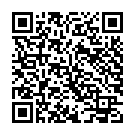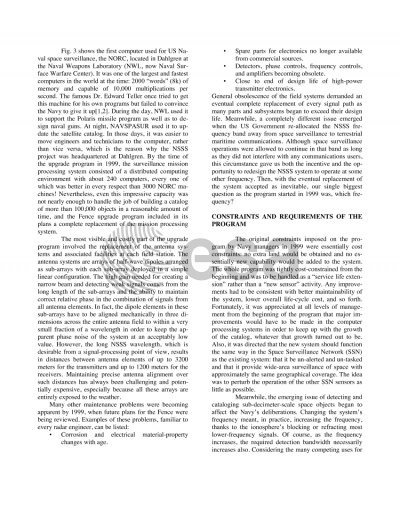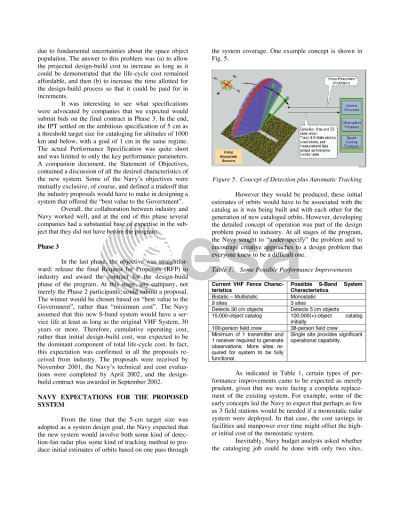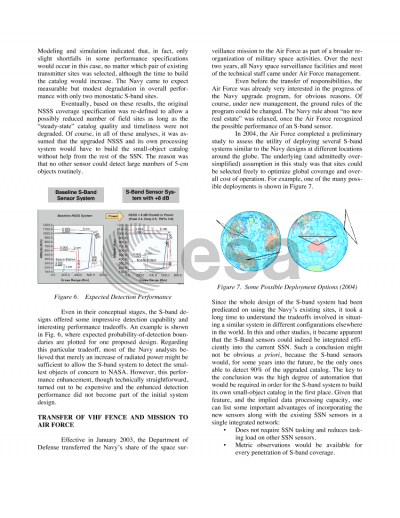Document details

Abstract
This paper reviews some of the main objectives, constraints and lessons learned in a particular US Navy program that ended in 2003 with the transition of the space surveillance mission, personnel and funding to the US Air Force. Because of changing needs for space situational awareness both for national security and global commercial reasons, the Air Force sensor program that is now emerging must necessarily be different in scope from the Navy program. However, the Navy program was the first US space surveillance sensor acquisition that addressed the problem of building a large catalog of small space objects. This problem was, and remains, a new one, because the existing catalog of space objects has been maintained since the launch of the first satellite, Sputnik I, on 4 October 1957. To date, it has always been possible to maintain a complete inventory of space objects without ever re-building the catalog ab initio, because of the relatively slow rate at which new satellites are launched into space. Now, with the probable introduction of new and very sensitive space surveillance systems in several countries in the coming years, the apparent satellite population will grow instantly by orders of magnitude as the previously invisible small-debris background population becomes visible. The problem of building a large catalog of possibly faint objects in a short time has become unavoidable. Yet, all existing methods of managing sensors, associating tracking data and predicting orbital uncertainties are inadequate for this task. For this reason, reviewing from a historical point of view the Navy's attempts to address some of these problems in a conceptual system design may give us a useful perspective, even though that particular program is defunct.My personal involvement with the Navy program included the entire duration and almost all aspects of the effort. Beginning in 1999, I participated in the formal identification of the need to improve the capability of the existing system, wrote the basic specification of system performance requirements, helped develop the Navy's Request for Proposals from industry, served on the source selection panel, reviewed the conceptual and preliminary designs of the new system, and finally assisted in the transition of the old system and mission to the Air Force in 2003-2004. Subsequently, in 2005, I joined Air Force Research Laboratory to work on projects related to space surveillance. Today, essentially all persons with first-hand technical knowledge of the Navy upgrade program and its background are either retired or work somewhere in the Air Force.
Preview









